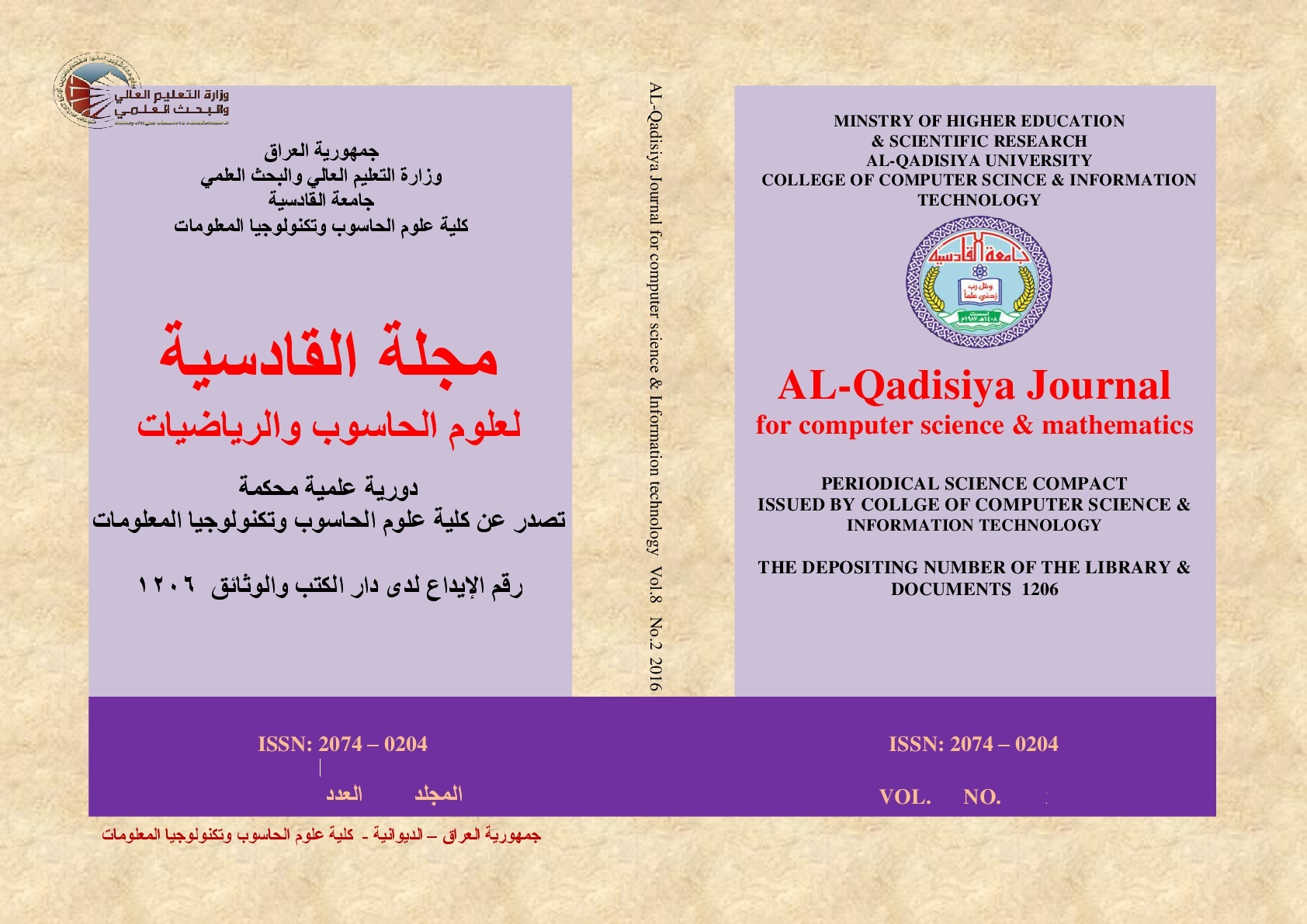Enhanced Fraudulent Detection Using Isolation Forest and Multi-Cluster Deep Learning
DOI:
https://doi.org/10.29304/jqcsm.2025.17.11964Keywords:
Anomaly Detection, Deep Learning, Ensemble Machine LearningAbstract
The anomaly detection problem has received increasing research interest due to the negative effects of fraud on several essential systems. Since Iraq is currently moving towards activating electronic financial transactions in all government ministries and private trade, this follows an increase in the risks of financial fraud. This research aims to improve the ability to identify fraudulent financial operations based on a multistage classification model that utilizes several machine learning techniques. It focused on avoiding the outlier instances that can affect the performance of the learning process by utilizing Isolation Forest. The implementation of the proposed model indicates that the ensemble size has no significant impact on its performance while increasing the number of clusters has led to a decline in performance. The experimental results with real datasets produced an F1-score of 99.097 compared to 80.5 and 74.65 with typical DNN, K-NN, and confirmed its preference compared to many popular classifiers and recent research articles.
Downloads
References
“Quick facts credit card and other financial instrument fraud,” accessed: 2024-12-03. [Online]. Available: https://www.ussc.gov.
J. Leskovec, A. Rajaraman, and J. D. Ullman, Mining of massive data sets. Cambridge university press, 2020.
J. Han, J. Pei, and H. Tong, Data mining: concepts and techniques. Morgan kaufmann, 2022.
S. S. Sulaiman, I. Nadher, and S. M. Hameed, “Credit card fraud detection challenges and solutions: A review.” Iraqi Journal of Science, vol. 65, no. 4,
H. Ahmad, B. Kasasbeh, B. Aldabaybah, and E. Rawashdeh, “Class balancing framework for credit card fraud detection based on clustering and similarity based selection (sbs),” International Journal of Information Technology, vol. 15, no. 1, pp. 325–333, 2023.
T. A. Olowookere and O. S. Adewale, “A framework for detecting credit card fraud with cost-sensitive meta-learning ensemble approach,” Scientific African, vol. 8, p. 00464, 2020.
R. Van Belle, B. Baesens, and J. De Weerdt, “Catchm: A novel network-based credit card fraud detection method using node representation learning,” Decision Support Systems, vol. 164, p. 113866, 2023.
P. Juszczak, N. M. Adams, D. J. Hand, C. Whitrow, and D. J. Weston, “Off-the-peg and bespoke classifiers for fraud detection,” Computational Statistics & Data Analysis, vol. 52, no. 9, pp. 4521–4532, 2008.
I. Benchaji, S. Douzi, B. El Ouahidi, and J. Jaafari, “Enhanced credit card fraud detection based on attention mechanism and lstm deep model,” Journal of Big Data, vol. 8, pp. 1–21, 2021.
E. Esenogho, I. D. Mienye, T. G. Swart, K. Aruleba, and G. Obaido, “A neural network ensemble with feature engineering for improved credit card fraud detection,” IEEE Access, vol. 10, pp. 16 400–16 407, 2022.
E. F. Malik, K. W. Khaw, B. Belaton, W. P. Wong, and X. Chew, “Credit card fraud detection using a new hybrid machine learning architecture,” Mathematics, vol. 10, no. 9, p. 1480, 2022.
M. S. Derweesh, S. A. H. Alazawi, and A. H. Al-Saleh, “Multi level deep learning model for network anomaly detection,” Journal of Al-Qadisiyah for Computer Science and Mathematics, vol. 15, no. 4, pp. 8–19, 2023.
W. S. Mahdi and A. T. Maolood, “Banking intrusion detection systems based on customers behavior using machine learning algorithms: Comprehensive study,” Journal of Al-Qadisiyah for computer science and mathematics, vol. 12, no. 4, pp. Page–1, 2020.
A. G. de Sa, A. C. Pereira, and G. L. Pappa, “A customized classification algorithm for credit card fraud detection,” Engineering Applications of Artificial Intelligence, vol. 72, pp. 21–29, 2018.
Z. Li, M. Huang, G. Liu, and C. Jiang, “A hybrid method with dynamic weighted entropy for handling the problem of class imbalance with overlap in credit card fraud detection,” Expert Systems with Applications, vol. 175, p. 114750, 2021.
J. F. Roseline, G. Naidu, V. S. Pandi, S. A. alias Rajasree, and N. Mageswari,“Autonomous credit card fraud detection using machine learning approach,” Computers and Electrical Engineering, vol. 102, p. 108132, 2022.
M. A. Islam, A. A. Imran, M. H. Rahman, M. A. H. Pabel, B. K. Mishra, and K. Basu, “Analysis and performance evaluation of credit card fraud by multi-model ml,” in 2024 3rd International Conference on Advancement in Electrical and Electronic Engineering (ICAEEE). IEEE, 2024, pp. 1–7.
Y. Tang and Y. Liang, “Credit card fraud detection based on federated graph learning,” Expert Systems with Applications, vol. 256, p. 124979, 2024.
V. V. K. Reddy, R. V. K. Reddy, M. S. K. Munaga, B. Karnam, S. K. Maddila, and C. S. Kolli, “Deep learning-based credit card fraud detection in federated learning,” Expert Systems with Applications, p. 124493, 2024.
G. Charizanos, H. Demirhan, and D. ˙Icen, “An online fuzzy fraud detection framework for credit card transactions,” Expert Systems with Applications, vol. 252, p. 124127, 2024.
H. Huang, B. Liu, X. Xue, J. Cao, and X. Chen, “Imbalanced credit card fraud detection data: A solution based on hybrid neural network and clustering-based undersampling technique,” Applied Soft Computing, vol. 154, p. 111368, 2024.
F. T. Liu, K. M. Ting, and Z.-H. Zhou, “Isolation forest,” in 2008 eighth ieee international conference on data mining. IEEE, 2008, pp. 413–422.
“The european cardholders credit card dataset,” accessed: 2024-09-03. [Online]. Available: https://www.kaggle.com/datasets/mlg-ulb/creditcardfraud
A. Dal Pozzolo, O. Caelen, R. A. Johnson, and G. Bontempi, “Calibrating probability with undersampling for unbalanced classification,” in 2015 IEEE symposium series on computational intelligence. IEEE, 2015, pp. 159–166.
S. Jiang, R. Dong, J. Wang, and M. Xia, “Credit card fraud detection based on unsupervised attentional anomaly detection network,” Systems, vol. 11, no. 6, p. 305, 2023.
A. Alharbi, M. Alshammari, O. D. Okon, A. Alabrah, H. T. Rauf, H. Alyami, and T. Meraj, “A novel text2img mechanism of credit card fraud detection: A deep learning approach,” Electronics, vol. 11, no. 5, p. 756, 2022.
A. M. Babu and A. Pratap, “Credit card fraud detection using deep learning,”in 2020 IEEE Recent Advances in Intelligent Computational Systems (RAICS). IEEE, 2020, pp. 32–36.
I. Sadgali, N. Sael, and F. Benabbou, “Bidirectional gated recurrent unit for improving classification in credit card fraud detection,” Indonesian Journal of Electrical Engineering and Computer Science, vol. 21, no. 3, pp. 1704–1712,
M. L. Ali, A. R. Ampojwala, D. R. Sudugu, J. Marousis, T. Guerrier, and M. R. Narasareddygari, “Analysis of various machine learning models in detecting credit card fraud activities,” in Fifth International Conference on Computer Vision and Computational Intelligence (CVCI 2024), vol. 13169. SPIE, 2024, pp. 114–122.
M. M. Mijwil and I. E. Salem, “Credit card fraud detection in payment using machine learning classifiers,” Asian Journal of Computer and Information Systems (ISSN: 2321–5658), vol. 8, no. 4, 2020.
K. Randhawa, C. K. Loo, M. Seera, C. P. Lim, and A. K. Nandi, “Credit card fraud detection using adaboost and majority voting,” IEEE access, vol. 6, pp. 14 277–14 284, 2018.
J. Chung and K. Lee, “Credit card fraud detection: an improved strategy for high recall using knn, lda, and linear regression,” Sensors, vol. 23, no. 18, p. 7788, 2023.
L. Zheng, G. Liu, C. Yan, and C. Jiang, “Transaction fraud detection based on total order relation and behavior diversity,” IEEE Transactions on Computational Social Systems, vol. 5, no. 3, pp. 796–806, 2018.
A. Abd El Naby, E. E.-D. Hemdan, and A. El-Sayed, “Deep learning approach for credit card fraud detection,” in 2021 International Conference on Electronic Engineering (ICEEM). IEEE, 2021, pp. 1–5.
Downloads
Published
How to Cite
Issue
Section
License
Copyright (c) 2025 Hayder K. Fatlawi

This work is licensed under a Creative Commons Attribution-NonCommercial-NoDerivatives 4.0 International License.













